Interim assessment
Interim Assessment - formative assessment, a process used by teachers and students during teaching that provides feedback and is designed to adjust teaching and learning, with the aim of promoting student learning.
The goal is a dialogue about learning, not an evaluation of the lecturer/supervisor/practitioner's teaching.
Why would we want to publish interim feedback during the semester?
- To support and improve student learning and engagement in the course in the semester
- To learn about the impact of different teaching activities and strategies on student learning
- To improve teaching and adapt it to the student groups
- To demonstrate reflective practice and show care and commitment to students' success
- To avoid surprises in course assessments in the end-of-semester quiz
When is the best time to post the feedback?
- A good time to collect interim feedback is after a midterm exam or when moving between study topics, early enough so that adjustments can be made if necessary (usually 4-6 weeks from the beginning of the semester).
- Since this is a very short questionnaire, it can also be administered more frequently, at key points - for example, after a different activity has been delivered, after a significant portion of the course content has been completed, etc.
Before posting the questions - present the process and goal to students
- Explain the goal and process to students: "This is your opportunity to give me only, anonymous feedback, and allow adjustments to be made, which you will benefit from later this semester."
- Inform students that you will not be able to respond to all requests! Due to time considerations, pedagogical considerations, etc., but listen and try.
- Send students an email from the course website, with a request to answer the questions (see below for an example).
After posting the questions
- Analyze the results and group the responses into three categories:
- Comments that refer to points that can be changed during the semester (e.g., number of assignments, group work, etc.).
- Comments/suggestions that involve changes that must wait until the next time the course is offered (e.g., a change in content).
- Comments that refer to changes that, for pedagogical reasons, cannot be made.
- Think about your teaching in light of the results, and the are realistic changes that can be made this semester.
Response to the survey - in the lesson after the survey
- Thank students for participating in the process and for their valuable comments!
- Share your results and reflections with students, and let them know what you can and can’t change, and why.
- Treat the opportunity as what you as teachers and they as learners can do to make the most of the learning opportunities remaining in the semester.
Example of a letter of application to students
Dear Students,
I would appreciate it if you would take the time to complete a short feedback questionnaire about the teaching/guidance/practice and your learning in the course.
Your feedback is very valuable, and it will help me learn from you what to maintain and what to improve after the current semester. The questionnaire is anonymous.
Thank you for your cooperation,
Sample questions
- Open-ended questions: The wording that focuses students on their learning. It is an important signal that this is not an evaluation of the teaching, and the goal is to give students the opportunity to reflect on their learning.
- What contributes to your learning in the course?
- What would you like to ask the instructor/lecturer/practitioner that might contribute to your learning in the course?
- Rating questions:
- I am involved in this course
- I feel that the integration of ________ contributes to my learning (fill in the blank with the learning method: lectures, flipped classroom, group problem-solving experience, simulations, surveys, project, case study, self-study through reading, watching videos...)
- Specific information about technological problems or other difficulties specific to distance learning:
- Technology problems made my engagement in the course more challenging.
- Online learning reduces distractions in the course.
Background Colour
Font Face
Font Kerning
Font Size
Image Visibility
Letter Spacing
Line Height
Link Highlight
Text Alignment
Text Colour
